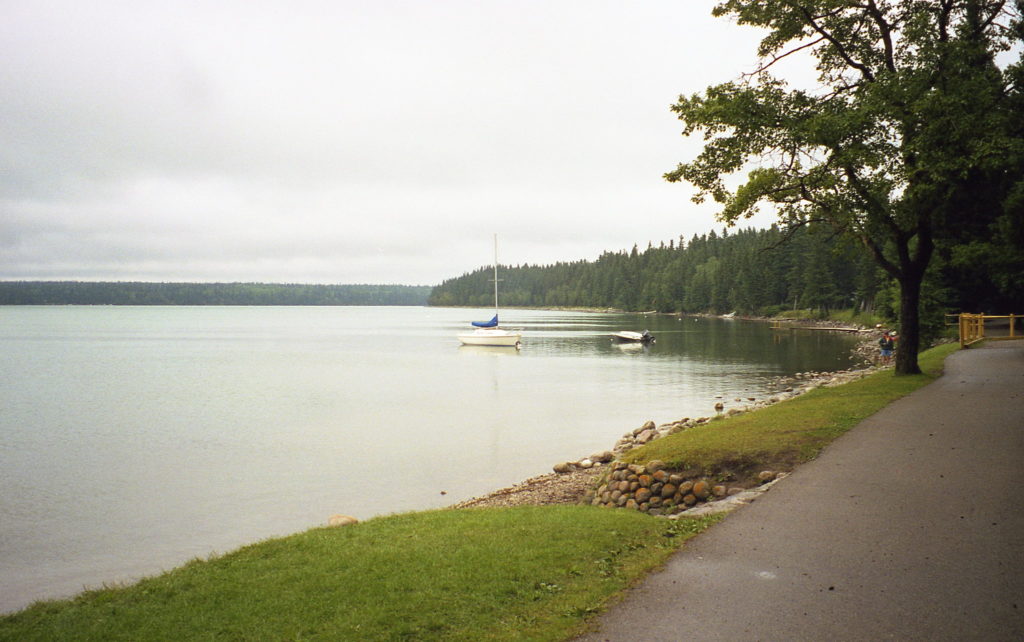
If you are looking for a new and different adventure, this place is perfect for you. From incredible mountains, a large number of lakes and wild rivers, this mysterious, rocky and also silent landscape in northern Quebec has the scars of the Earth’s dramatic past. Nunavik, a charming place that has a connection with nature that you won’t find anywhere else.
Activity/Places highlight
Nunavik is a magical place that will surprise you with every step you take. In its territory, the size of France, there are 3 national parks. One of them, and the best known, is the Pingualuit National Park. Moreover, walking on a flat terrain full of rocks, you will find the wonderful crater of Pingualuit. It is normal to see a caribou walking around.

This great crater will surprise you. It is a giant circle 400 meters deep and 3.5 kilometers wide. The edge of the crater rises more than 500 meters (500 feet) above the endless tundra, from a distance like a small hill on the horizon. Without a doubt, the best thing is that you can climb to the top and admire the incredible view that Lake Pingualuk offers you. In addition, the river water is of a very intense blue, due to its formation with rain and thaw.
There is also the Kuururjuaq National Park, which is characterized by having the highest mountains in Quebec and North America. In addition, the Tursujuq National Park, the largest in the province, will take you to remember the far west. Without a doubt, wildlife cannot be ignored. From the polar bear, the most dominant caribou in the world’s largest herds, to the equitable tundra wolves.

How to get there
Kangiqsujuaq is located approximately 1,120 miles (1,800 km) north of Montreal, with regular flights from Quebec City, Montreal and Ottawa. There are no roads to Nunavik. You can only get there by plane. Thus, the nearest airport is Schefferville (YKL). However, experienced hikers may prefer to travel 55 miles (88 km) from Kangiqsujuaq to the crater on foot. Most visitors book a flight from the village to Lake Laflamme, followed by a 45-minute walk.
When to go
Although the park is open all year round, long daylight hours and the best weather conditions facilitate access from mid-June to mid-September. In addition, March and April are ideal for dog sledding or cross-country skiing along the park access path from Kangiqsujuaq.

How long
This trip is a journey, so take at least 4 days, as you arrive, settle down, meet and explore this amazing corner of the earth.
Opening and closing hours
The place is always open, it is recommended to explore in daylight for security reasons. Also, agree with your guide or travel agency to plan a schedule that works for what you want to do.
Planning
Arrange accommodation and travel at least six weeks in advance, as places are limited. In addition, it is best to go with someone who knows the area or find a travel agency.

Inside Information
Undoubtedly, the main thing is warm clothing, sweaters, gloves, hats and blankets. Don’t forget your boots and also some food supplies. Also, always remember to tell the regional police what your route will be. Prepare for an arduous walk to the crater on very rocky terrain that can also be wet and slippery.
History
In the 1950s, Nunavik was populated by the Inuit. After some conflicts between Canada’s sovereignty and the upper Arctic, this population was relocated to the different villages further north. Years later, the government tried to compensate the population by placing them in their original place. However, this treaty did not happen.
Although the Inuit still hunt here, they travel from Kangiqsujuaq, the nearest village, and from villages several days away, just as their ancestors did. For generations of these indigenous peoples, the area is of great spiritual importance. Its name, Pingualuit – Inuktitut for “where the earth rises”, refers to the park’s 1.3 million-year-old impact crater. In addition, it was formed when a giant meteorite crashed into the Earth and caused a great depression.

Websites
Other Nearby Attraction
Riding Mountain National Park located in the southwest of the province of Manitoba is a unique place that houses a great diversity of living beings. In addition, you can also enjoy extended windswept meadows, deep forests, different flowers, lakes, and wetlands. Meet elk, black bears, countless species of birds and wolves. Admire the incredible views with the sunset and the mountains.

If you loved this article or found it useful, don’t forget to share it with your adventurous and travel-hacking friends! If you want more posts like this, follow us on Youtube, Instagram, Pinterest, Twitter or Facebook and subscribe to our newsletter!

